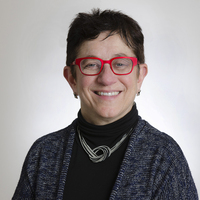State of Broadband 2020
Tuesday, January 28, 2020
Digital Beat
State of Broadband 2020
In Washington, DC, today, policymakers, public interest advocates and nonprofits, researchers, and the business community are gathering for the 2020 State of the Net Conference. Hosted by the Internet Education Foundation, State of the Net explores important, emerging trends and their impact on internet policy. We took the occasion as an opportunity to ask Benton Institute experts for their take on broadband as we enter the 2020s. Here are their answers.
Benton Senior Fellow Jonathan Sallet: The State of Broadband is... Uncertain

I believe that, as a nation, we should ensure that everyone in America can use High-Performance Broadband by the end of this decade. Much progress on broadband has been made–consider the advances in just the speeds available to home users over the past quarter-century. And there is every reason to believe that technological advances will continue–just as we can expect that the importance of broadband to people’s every day lives will continue to grow.
And yet, we are far–and because of issues around data, we can’t know exactly how far we are–from reaching that goal. Fiber and advanced cable networks are reaching some, but not all. Where there is robust broadband, there is too little competition. Where there are networks, people may find their subscriptions too expensive (in part because of limited competition). And not everyone has the digital skills to use the networks that do exist. Connections to community institutions have come a long way in bringing broadband to community buildings, like schools and libraries, but the next frontier is obvious. These institutions need to reach their users when those users–including students, library patrons, and medical patients–are not in the building.
Universal, high-performance broadband by the end of this decade is a big challenge. Each of these different facets of the challenge have to be solved if we are to reach our goal.
And that is what is uncertain. Not whether society understands that broadband is important. In fact, it’s hard to think of a big problem in America today that can be solved without broadband–from agriculture, to climate change, to education (of students of all ages), to economic growth and individual economic opportunity.
No, what’s uncertain is whether as a nation, at all levels of government, we will understand that we are all stronger if all of us can use High-Performance Broadband. There is a law of network engineering (called Metcalfe’s Law) that tells us that the value of adding a new user rebounds to the benefit of all users. And that applies just a much to broadband.
In short, we need our national broadband agenda to be a home run. And you can’t hit a home run without touching all the bases: deployment, competition, affordability and adoption, and the role of community anchor institutions.
Starting at the community level, with the benefit of practical, foresighted leadership.
You can’t hit a home run without touching all the bases. Now, in this decade, it’s time to touch all the bases in order to bring High-Performance Broadband home.
Jonathan Sallet is a Benton Senior Fellow and author of Benton’s Broadband for America’s Future: A Vision for the 2020s.
Benton Senior Fellow and Public Advocate Gigi Sohn: Hard Work on Broadband Adoption Yet to Be Done

At least 141 million people in the United States do not subscribe to fixed home Internet at the Federal Communications Commission’s now outdated 25 down, 3 up (25/3Mbps) definition for broadband. That is nearly 43% of the American population.
What are the reasons for non-adoption? Surprisingly, just 7% of unconnected Americans don’t subscribe because no fixed broadband is available where they live. Over a third (36%) of U.S. residents who reportedly do have access to 25/3 Mbps fixed broadband either choose to subscribe to a slower tier or simply go without any service at all. Cost is a primary barrier to adoption. Additionally, while unconnected Americans are spread out geographically, communities of color and low-income Americans are far more likely not to adopt broadband than are whites and individuals and families with higher incomes. This can be attributed to structural inequality, such as housing discrimination and discriminatory credit and lending practices that resulted in segregated, underserved communities and facilitated disparate broadband deployment in high- and low-income areas as well as unequal access to technology.
But what should alarm us all is that home broadband adoption rates aren’t improving. They have remained stable for the past three years.
Now is the time for policymakers to act. Addressing the reasons why so many do not subscribe to a broadband connection is critical to ensuring that all Americans can benefit from the opportunities that broadband provides. What's needed is a multi-pronged strategy, an Affordability Agenda, if you will. That agenda demands action from local, state and federal governments, community anchor institutions, the non-profit sector, philanthropies, industry and countless individuals.
On Wednesday, January 29, I will be testifying before the House Subcommittee on Communications and Technology, exploring just how we can empower communities through digital equity and broadband adoption. Please tune in.
Gigi B. Sohn is a Distinguished Fellow, Georgetown Law Institute for Technology Law & Policy and Benton Senior Fellow and Public Advocate. She is one of the nation’s leading public advocates for open, affordable and democratic communications networks. For nearly thirty years, she has worked across the country to defend and preserve the fundamental competition and innovation policies that have made broadband Internet access more ubiquitous, competitive, affordable, open and protective of user privacy.
Benton Senior Counselor Andrew Jay Schwartzman: Network Neutrality Is Inevitable

“Network Neutrality,” a term which is shorthand for policies that prohibit Internet service providers from discriminating against some content and some users, will be an important element of the growth and evolution of the Internet in the 2020s and the decades to follow.
Even though a federal court recently upheld parts of the Trump-era Federal Communications Commission’s decision repealing Network Neutrality rules, restoration of strong Network Neutrality rules is inevitable. That is because this decision gave states the green light to adopt their own Network Neutrality rules (as several states have already done) and because there is overwhelming popular support for Network Neutrality. I am confident that this will, in turn, lead to restoration of national-level Network Neutrality rules within the next few years, either by Congress or a changed FCC membership.
The early success and later growth of the Internet in the United States was because of, not in spite of strong non-discrimination policies that were in place through 2003 (cable) and 2005 (phone companies). These policies have lowered barriers of entry for all manner of online content providers and brought free speech principles to the Internet. They have kept Internet service providers from favoring their own content and offering preferential treatment to some content at the expense of others. We need them, and we will have them.
Benton Fellow Denise Linn Riedl: Building Smart Cities With, Not For

Everyone agrees that inclusion and civic engagement in technology are important, but what is less certain is what ideal civic engagement should look like given a particular technology project’s scope and constraints. What’s also unclear is how to do civic engagement well, and how to do it authentically. In the context of emerging smart city deployments, where terms like “Internet of Things” (IoT), fiber, and smart street lighting are not dinner time conversation topics, this challenge is particularly acute.
At Smart Chicago Collaborative (now City Tech Collaborative) and currently the City of South Bend, I’ve had the opportunity to both evangelize and practice civic engagement in new local technology projects. Unfortunately, like others in the field, I’ve also been guilty of not being specific enough when I talk about civic engagement generally. “Civic engagement” can refer to one of several different methodologies along a spectrum of technology engagement. How can we start to think about inclusion and civic engagement methodologies in smart city projects?
In the civic tech community of practice, the mantra of “build with, not for” reigns supreme. The simple phrase hammers home an important process nuance: technology is only as good as it is welcome, relevant and user-friendly.
While the “build with, not for” expectation has shaped the way civic hackers create new apps for our phones, it has not yet been widely embraced by the urban technologists deploying sensors, Wi-Fi kiosks, or other public technologies on our curbs. This reveals a very real and timely challenge as we pursue the 21st century, data-rich, connected, and responsive cities we all desire so much. As more and more technology is placed in the public way, how can we make sure cities are planned inclusively and align with the public interest? What does authentic civic engagement and procedural justice look like during the deployment of new smart city technologies in our communities?
In A Field Guide for Inclusive Urban Technology, to be published by Benton next month, I will share the lessons, cases and resources developed by local technology champions and planners. The Field Guide will be a valuable reference for any local worker - inside or outside of government - who is helping to plan or implement technological change in their community. It will make projects stronger, more sustainable, and more inclusive.
Mayor Pete Buttigieg named Denise the Chief Innovation Officer for the City of South Bend (IN) at the end of January 2019. Previously, Denise was in charge of Ecosystem Development at Chicago’s City Tech Collaborative. Denise has diverse experiences in telecommunications policy and planning, digital inclusion, and emerging smart city technologies. During her Benton Fellowship, she will ask: As cities strive to be “smarter,” and more and more technology is placed in the public way, how can we make sure smart city projects (whether they are IoT sensors, small cell deployments, WiFi Kiosks, or other new fixtures to our neighborhoods) are planned with residents and align with the public interest? Denise is the co-author, with Blair Levin, of The Next Generation Network Connectivity Handbook: A Guide for Community Leaders Seeking Affordable, Abundant Bandwidth (December 2016).
Benton Faculty Research Fellow Christopher Ali: The U.S. Needs a Comprehensive Rural Broadband Plan

Rural broadband is having a moment in American political discourse. The lack of connectivity in rural areas is a key issue amongst residents, and a frequent talking point for rural representatives. Terms like “homework gap,” “digital deserts” and “digital distress” have become common phrases, while industry associations, researchers, local and state officials, lawmakers, and regulators grapple with the colossal failure of broadband mapping. Taking heed, the Federal Communications Commission recently announced a $20.4 billion funding program for rural broadband called the Rural Digital Opportunity Fund or RDOF, and a $9 billion program for rural 5G deployment. Joining the FCC, five presidential candidates have released plans to connect the country’s rural places, the most ambitious of these – Bernie Sanders’ – would see $150 billion for grants and assistance for publicly-owned municipal fiber systems. In short, this country is about to spend more money on rural broadband than any other telecommunications program in its history.
Moments like these open the door to opportunities for real action but they also represent chances to further cement the status quo. Truth be told, despite the FCC’s actions and candidate announcements, rural America remains woefully disconnected from a digital world that the urban and wealthy take for granted. Worse yet, the digital divide may be growing as industry shifts gears from fixed broadband to 5G. Part of the problem is that the country lacks a coherent strategy to bridge the rural-urban digital divide. Without a plan, throwing money at the digital divide will only replicate existing inequalities inherent within current rural broadband funding programs.
The overarching issue facing the rural-urban digital divide, therefore, is not about technology, nor is it about money. It’s about policy and politics, or, rather, the lack of policy and the abundance of politics. It’s the politics of incumbency that allowed CenturyLink and Frontier to garner millions of dollars a year in CAF II subsidies and then fail to live up to their commitments. It’s the politics of technological neutrality that allowed ViaSat to come out as one of the largest winner in the CAF II Auction, despite offering connections that fail to live up to the definition of broadband. It’s the politics of power that have stymied attempts to revise broadband mapping and replace Form 477 where ISPs exaggerate their rural connections. These politics, coupled with a lack of policy, have allowed the status quo to go on far too long.
The country lacks a comprehensive rural broadband policy, plan or strategy. This lack of coherence has led to knowledge silos and authoritative jousting between the two agencies charged with ameliorating the rural-urban digital divide, and worse, it has allowed the major telecommunication companies like AT&T, Windstream, and CenturyLink to parlay their incumbency into preferential regulatory treatment. In my forthcoming book, Farm Fresh Spectrum: Rural Broadband and the Future of Connectivity, and in multiple op-eds, I lay out the necessity and scaffolding for a national rural broadband plan. Its actualization is my hope for 2020.
Christopher Ali is a Benton Faculty Research Fellow and Assistant Professor in the Department of Media Studies, University of Virginia. During his two-year Benton Faculty Research Fellowship, Ali will continue work on his new book project, Farm Fresh Spectrum: Rural Interventions in Broadband Policy, which investigates the relationship between farming communities, communication technologies, and communication policy in the United States.
The Benton Institute for Broadband & Society is a non-profit organization dedicated to ensuring that all people in the U.S. have access to competitive, High-Performance Broadband regardless of where they live or who they are. We believe communication policy - rooted in the values of access, equity, and diversity - has the power to deliver new opportunities and strengthen communities.
© Benton Institute for Broadband & Society 2020. Redistribution of this email publication - both internally and externally - is encouraged if it includes this copyright statement.
For subscribe/unsubscribe info, please email headlinesATbentonDOTorg






